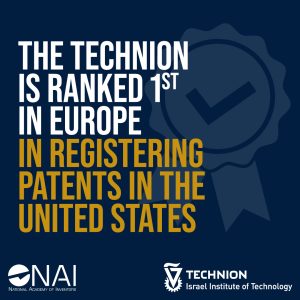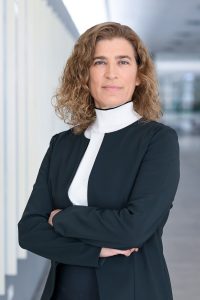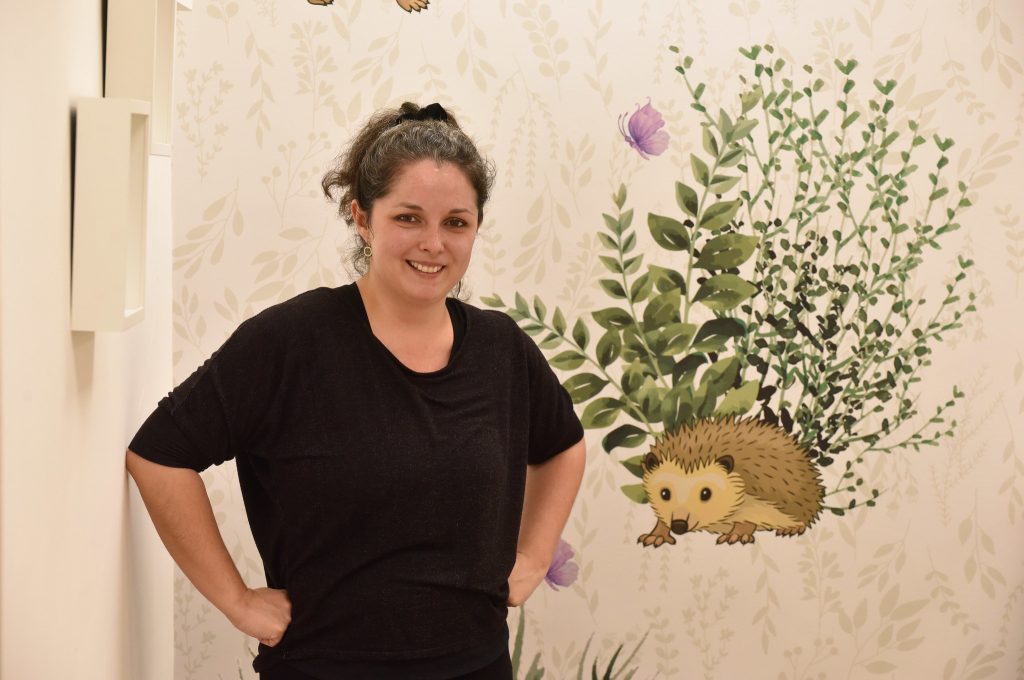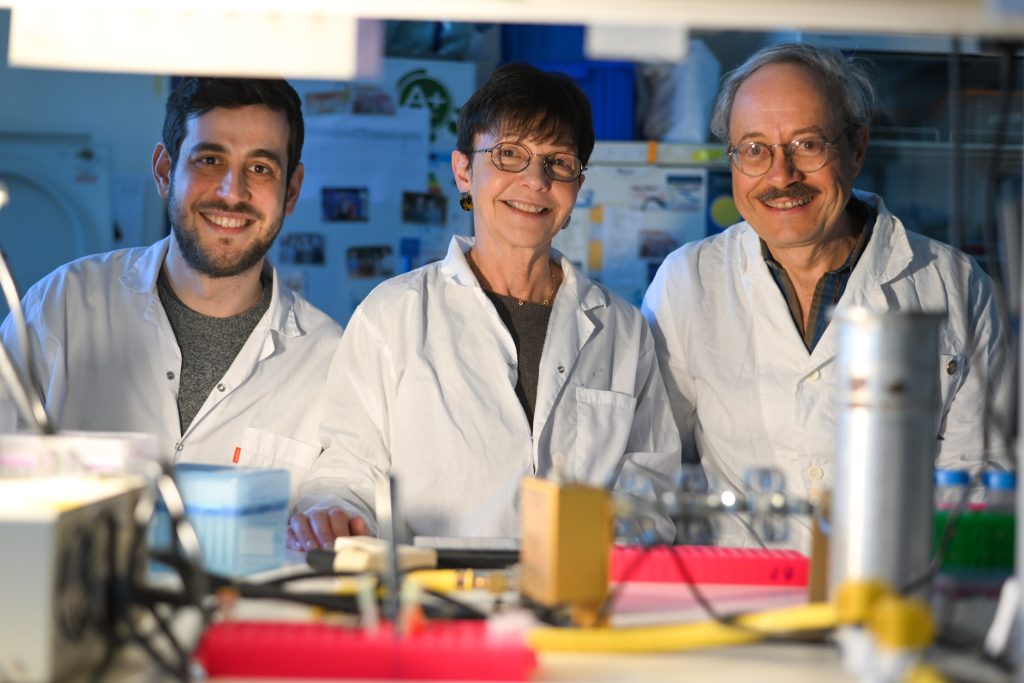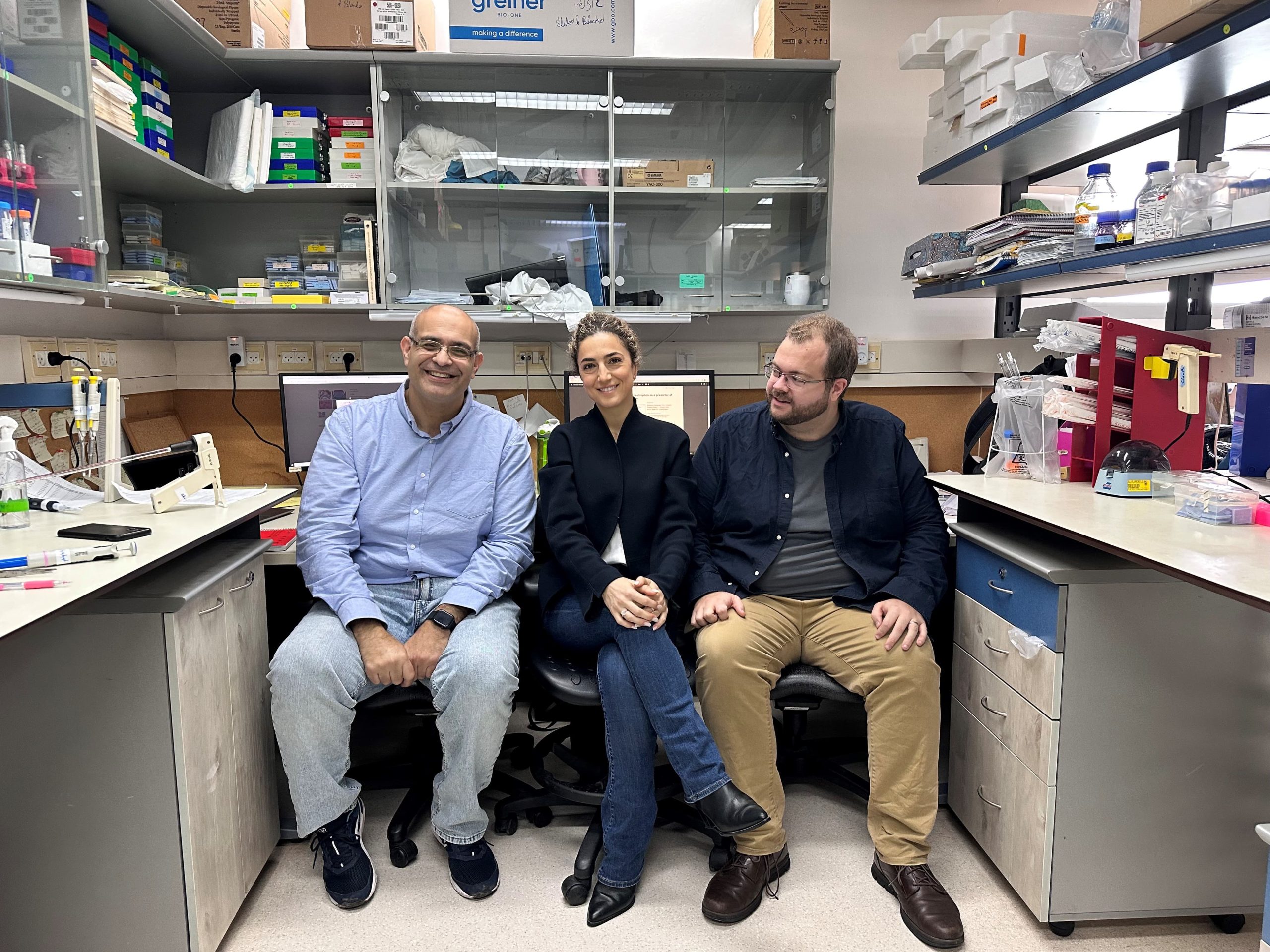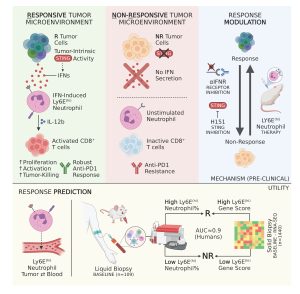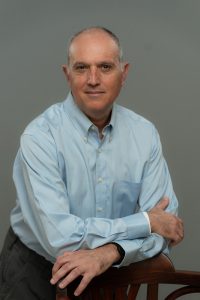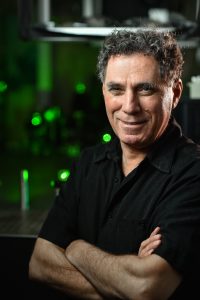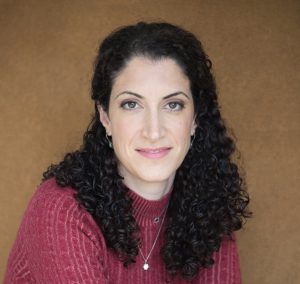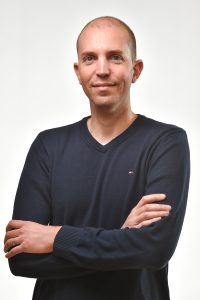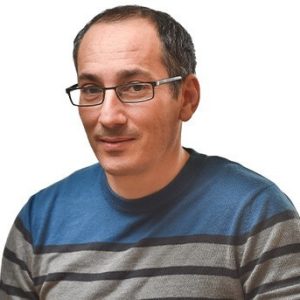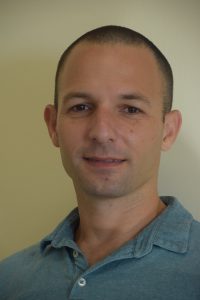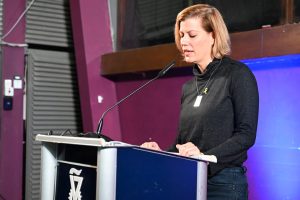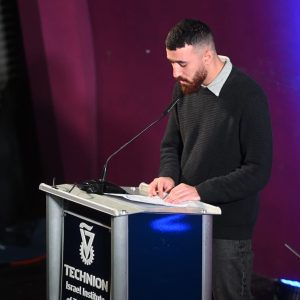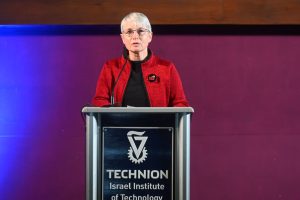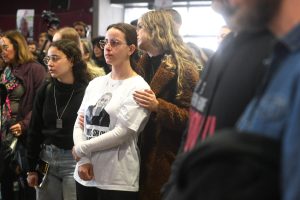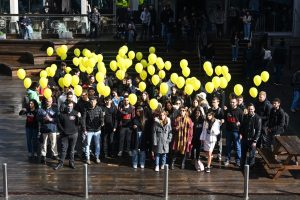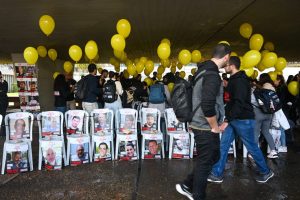The Technion announced today that two well-known foundations have joined together in a collaborative effort to enhance the Technion Human Health Initiative. The undertaking will establish the D. Dan and Betty Kahn Human Health Building, which will be home to the Bruce and Ruth Rappaport Cancer Research Center.
[CONTINUED BELOW]
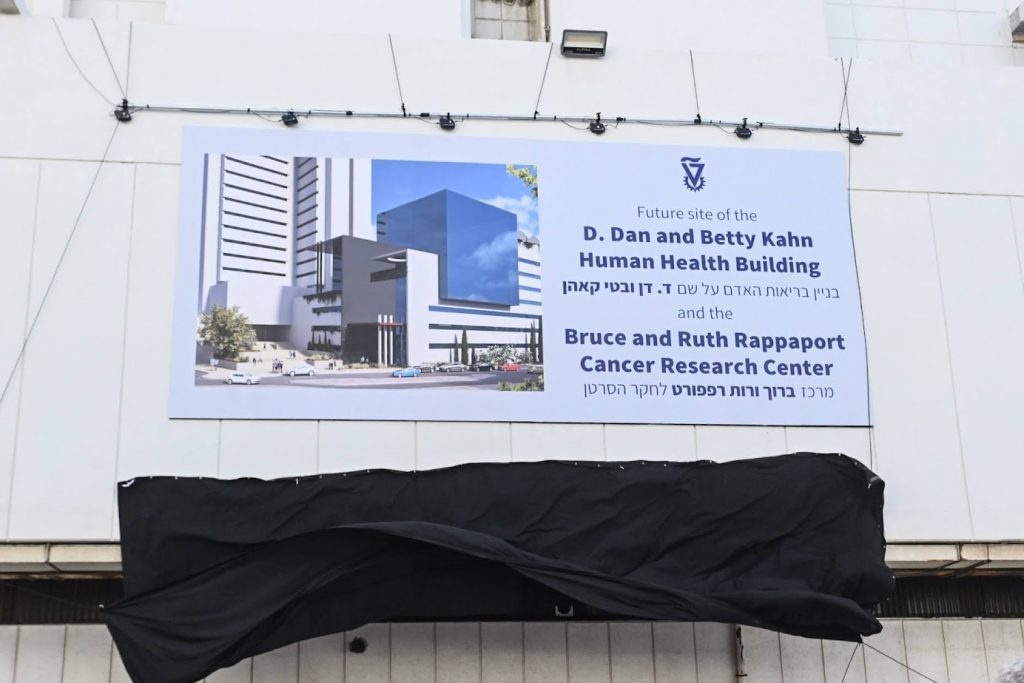
At the cornerstone laying ceremony
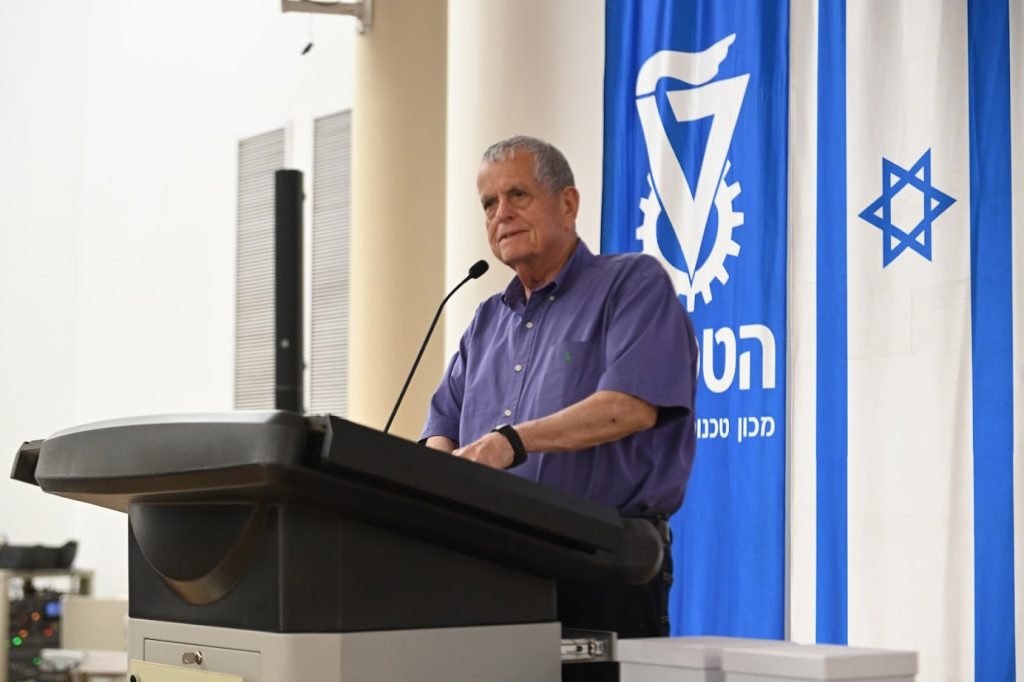
Nobel Laureate in Chemistry, Prof. Aaron Ciechanover
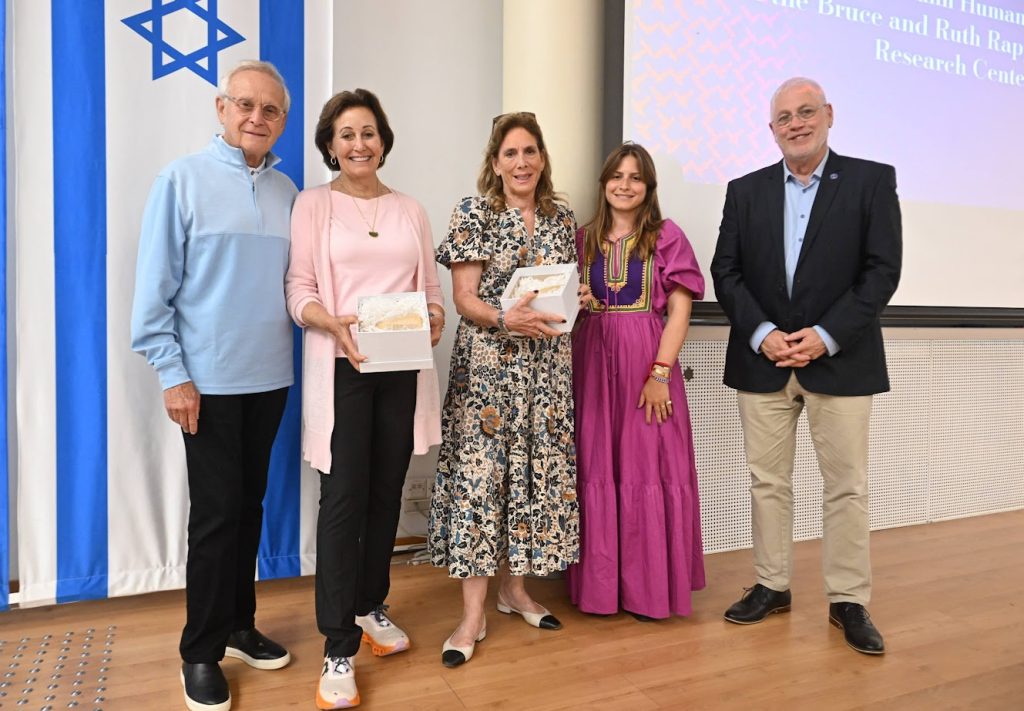
From left to right: Larry and Andi Wolfe, Irith Rappaport, Shir Goldstein and Technion President Prof. Uri Sivan
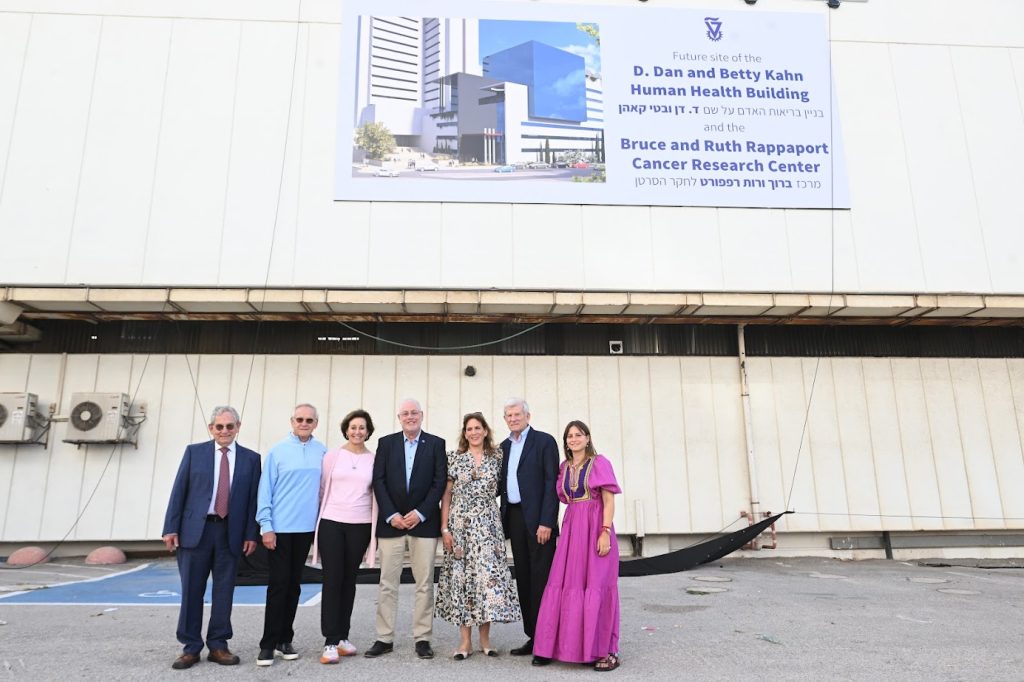
From left to right: Advocate Moriel Matalon, Larry and Andi Wolfe, Technion President Prof. Uri Sivan, Irith Rappaport, Glen Perry and Shir Goldstein.
Technion President Prof. Uri Sivan said, “The construction of this building and the cancer research center housed in it is nothing less than a historic event. We are celebrating today two of the largest donations in the history of the Technion, which were made possible thanks to a first of its kind partnership between two foundations that share a long-standing tradition of generously supporting the Technion: the D. Dan and Betty Kahn Foundation and The Bruce and Ruth Rappaport Foundation.”
“I lack the words to fully describe our gratitude to these two foundations and to those who worked tirelessly to bring the dream to life,” continued President Sivan. “The goals of the gift, reflected in the titles of the building and the research center, are cancer research and human health, using a multidisciplinary approach and relying on all the Technion’s capabilities and its close ties with hospitals, in particular with the Rambam Healthcare Campus. I find it symbolic that these donations are made on the golden jubilee of the Technion Faculty of Medicine, and at the opening of the Technion Centennial year. The generosity and the vision of the donors reflected in this initiative will lead the Technion to new heights. We will advance into the second century of the Technion, able to improve the lives of millions of people in Israel and around the world.”
The cornerstone laying ceremony was held during the Technion’s Board of Governors meeting in June at the Ruth and Bruce Rappaport Faculty of Medicine. Participants included philanthropists Ms. Irith Rappaport and Andi and Larry Wolfe; Technion President Prof. Uri Sivan; Dean of the Ruth and Bruce Rappaport Faculty of Medicine Prof. Ami Aronheim; Nobel Laureate and Distinguished Prof. Aaron Ciechanover, who will be the Chairman of the Board of Directors of the new Cancer Research Center; Prof. Amir Orian, head of the Cancer Research Center; members of the Technion senior administration and Board of Governors; faculty members; and representatives of Technion Societies around the world.
Nobel Laureate Distinguished Professor Aaron Ciechanover, who conceived and established the center, recalled a line from the Mishnah that Bruce Rappaport used to quote: “without flour there is no Torah, but with no Torah there is no flour.” “This wisdom accompanied Bruce for decades. The Technion provided the Torah, the learning, he’d say, while the Rappaport family provided the flour.”
“I started to dream about this Center when the first cancer drug based on the ubiquitin mechanism, which Professor Hershko and I discovered, came to the market,” he continued. “When you start basic research, you never know where it’s going to lead you. We, the researchers, are committed to turn this Center into a world leader research center.”
Ruth and Bruce Rappaport, may their memory be a blessing, were two of the greatest friends of the Technion and among the generous philanthropists whose donations assisted in erecting the Ruth and Bruce Rappaport Faculty of Medicine building and the Rappaport Family Institute for Research in the Medical Sciences. The faculty building was inaugurated in 1979. Even then, the Rappaports believed faculty members would come to win the Nobel Prize; a prophecy that came true when Distinguished Professors Avram Hershko and Aaron Ciechanover were awarded the Nobel Prize in Chemistry in 2004. In addition to raising the Ruth and Bruce Rappaport Faculty of Medicine and the Rappaport Family Institute for Research in the Medical Sciences, Ruth and Bruce Rappaport, together with the Rambam Health Care Campus, initiated the construction of the Ruth Rappaport Children’s Hospital.
Ruth and Bruce Rappaport were Technion Guardians; a title reserved for those who made among the highest level of commitments to the Technion. In 2014, the Technion awarded Ruth Rappaport an honorary doctorate. She passed away in 2018, eight years after her husband Bruce. Their philanthropic legacy is continued by their daughters Ms. Irith Rappaport and Dr. Vered Drenger. In appreciation of her outstanding contribution to the Technion and to other philanthropic causes, the Technion awarded Ms. Irith Rappaport an honorary doctorate in 2022.
“I would like to dedicate this day and moment to my late sister Shoshana, who passed away last July after relentlessly fighting cancer for 7 years,” Ms. Irith Rappaport spoke at the ceremony. “Despite the best available doctors, medications and innovative treatments that helped delay the bitter end, eventually the disease won. I’m sure that most of you have experienced such painful losses. Unfortunately, millions around the world are facing the same fate as we speak, and therefore it is clear to me that there is still a long way to go and a lot of research to be done in developing a comprehensive solution to this cursed disease. My parents, who were true guardians of this academic institution, would undoubtedly be delighted to see their vision and values transformed into reality with the same passion and excitement they always had in their philanthropy. Because at the end of the day, philanthropy is about passion and people. I can only hope that the research that will be carried out in the new Center will keep pushing the boundaries of innovation for the betterment of mankind.”
Dan and Betty Kahn, of blessed memory, were among the Technion’s most important benefactors and Technion Guardians. The bond between Dan and Betty Kahn and the Technion was forged in the early 1960s, and in 2008 their foundation constructed the D. Dan and Betty Kahn School of Mechanical Engineering. Dan and Betty Kahn were among the original contributors to the first building of the Faculty of Aerospace Engineering. Dan Kahn was a member of the Technion Board of Governors and the American Technion Society (ATS) Board of Directors and served as the president of ATS – Detroit. The Technion awarded him an Honorary Fellowship in 2006, and in 2011 bestowed upon him an Honorary Doctorate. The legacy of Dan and Betty Kahn is continued today by their daughter Andrea (Andi) together with her husband Larry Wolfe. Larry embraced philanthropy following Dan Kahn’s example, deepening his involvement with the Jewish community in Detroit, the U.S., and Israel. In 2012 he was named president of the D. Dan and Betty Kahn Foundation. In this capacity, he is involved in the Michigan-Israel Partnership for Research and Education, in which the Technion plays a major role. Andi Wolfe is active on multiple boards involving Jewish communities in Israel and the USA. She has been a member of the local and National Boards of Directors of the ATS for many years and is a member of the Technion Board of Governors. Last year, Andi and Larry Wolfe established the Wolfe Center for Translational Medicine and Engineering in the Helmsley Health Discovery Tower; a collaboration between the Technion and Rambam Healthcare Campus. The Wolfe Center serves as a platform for in-depth applicative clinical research.
“On behalf of the D. Dan and Betty Kahn Foundation and my fellow Trustees, Patti Aaron and Arthur Weiss, I would like to thank President Uri Sivan for his vision of undertaking the Technion Human Health Initiative, Professor Aaron Ciechanover for his leadership and most importantly the Rappaport Foundation for its participation is this ambitious project,” said Larry Wolfe, President of the Khan Foundation.
Prof. Ami Aronheim, Dean of the Ruth and Bruce Rappaport Faculty of Medicine said, “It is a symbolic event. Here will be combined the engineering strength of the Technion and the clinical strength of the affiliated hospital. The faculty and the hospital will become a leading player in cancer research, a research hub for innovation. The Center will enable us to conduct cutting-edge research that would serve as a catalyst for developing life-saving treatments. Your support and endless generosity have made this dream come true.”
For photos click here
- From left to right: Larry and Andi Wolfe, Irith Rappaport, Shir Goldstein and Technion President Prof. Uri Sivan
- From left to right: Advocate Moriel Matalon, Larry and Andi Wolfe, Technion President Prof. Uri Sivan, Irith Rappaport, Glen Perry and Shir Goldstein.
- Nobel Laureate Distinguished Professor Aaron Ciechanover
Photos: Rami Shelush for the Technion’s spokeswoman’s office
For more information: Doron Shaham, Technion Spokesperson, +972-50-3109088



